World leaders' first foreign trips reveal more than diplomatic protocol. They are carefully crafted political stories. Meray Maddah and Max Heermann analyse inaugural diplomatic journeys to uncover stability and change in global networks, from Europe’s political integration to Donald Trump’s break from traditional allies
On 7 May 2025, a day after becoming German Chancellor, Friedrich Merz travelled to Paris and Warsaw, meeting French President Emmanuel Macron and Polish Prime Minister Donald Tusk. Two days later, Merz arrived in Brussels for talks with EU and NATO officials. His predecessor Olaf Scholz had been seen as passive and hampered by internal disagreements in his coalition government. Merz's flurry of travels was supposed to send a strong signal: Germany is back as leader in European politics.
State visits by heads of state or government (HOGs) matter for diplomatic and economic relations – first trips in particular signal political priorities and ambitions. The 2025 Country and Organizational Leader Travel (COLT) dataset, compiled by Jonathan Moyer and colleagues, analyses over 78,000 foreign trips by HOGs, and is a valuable resource for studying global patterns of diplomacy.
The graphic below uses COLT data to map global inaugural trips between 2010 and 2023. Arrows indicate direction of travel; line thickness how frequently a route was chosen as a first trip. Node size reflects cumulative inbound visits since the 1990s, so some countries appear large, despite receiving few recent first visits. Different node shapes represent diplomatic roles across the full dataset: triangles mark sender-only states; squares are receivers and senders.
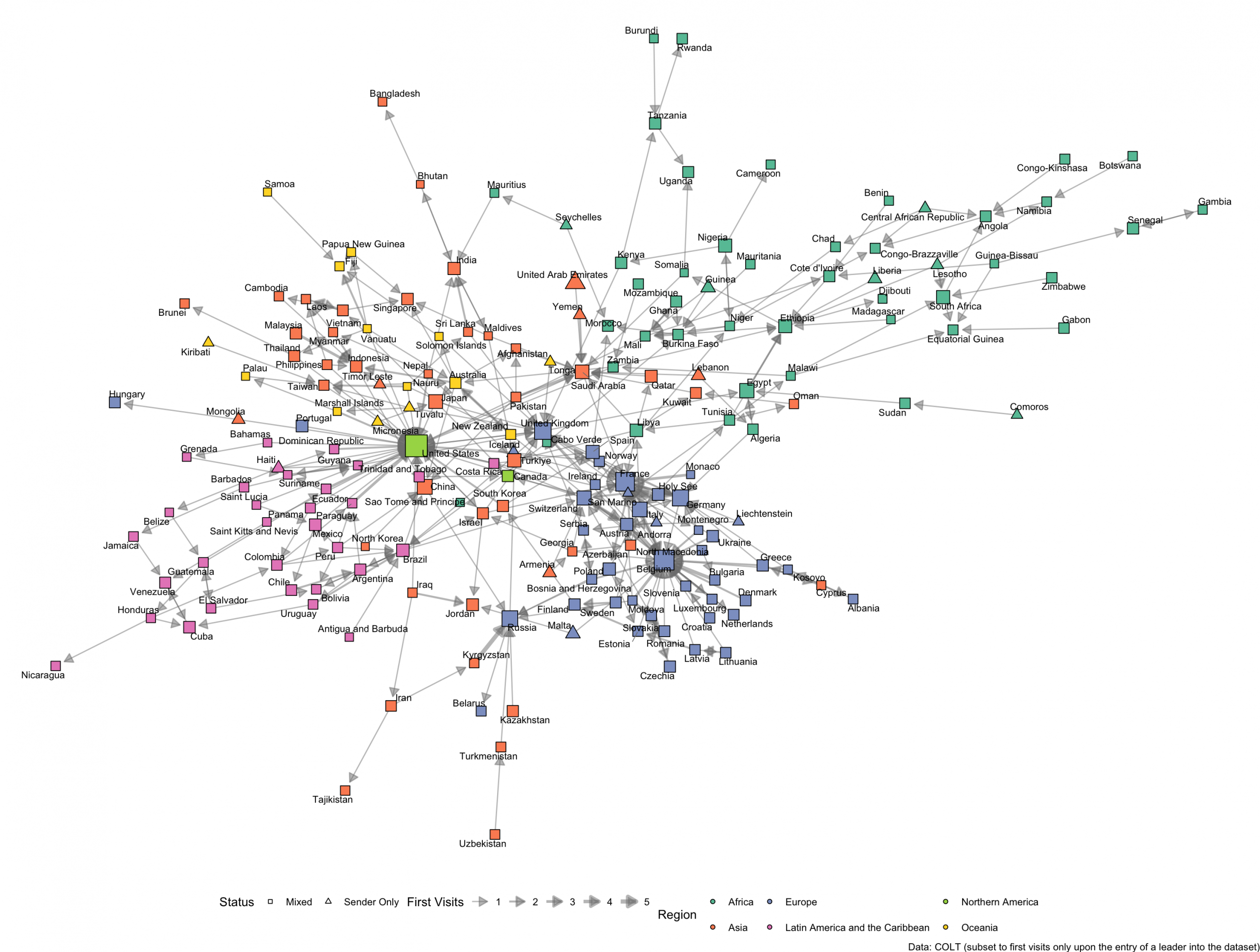
It is not surprising that Merz visited Paris first. COLT shows the close diplomatic ties between Germany and France. French Presidents Macron, François Hollande, and Nicolas Sarkozy all made their first trips to Berlin. Likewise, Angela Merkel chose France as her first-trip destination for her third and fourth terms as German Chancellor. The node size of small Belgium reveals its central place in (Western) diplomacy. Hosting EU institutions and NATO headquarters, Belgium attracted many state leaders, including Merkel and Scholz.
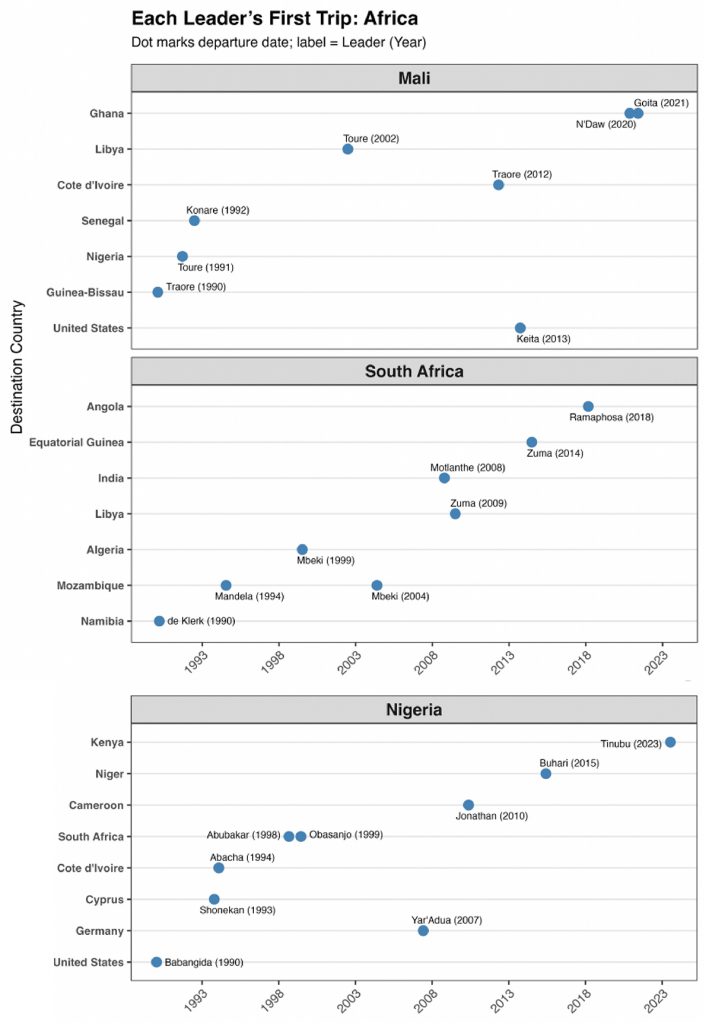

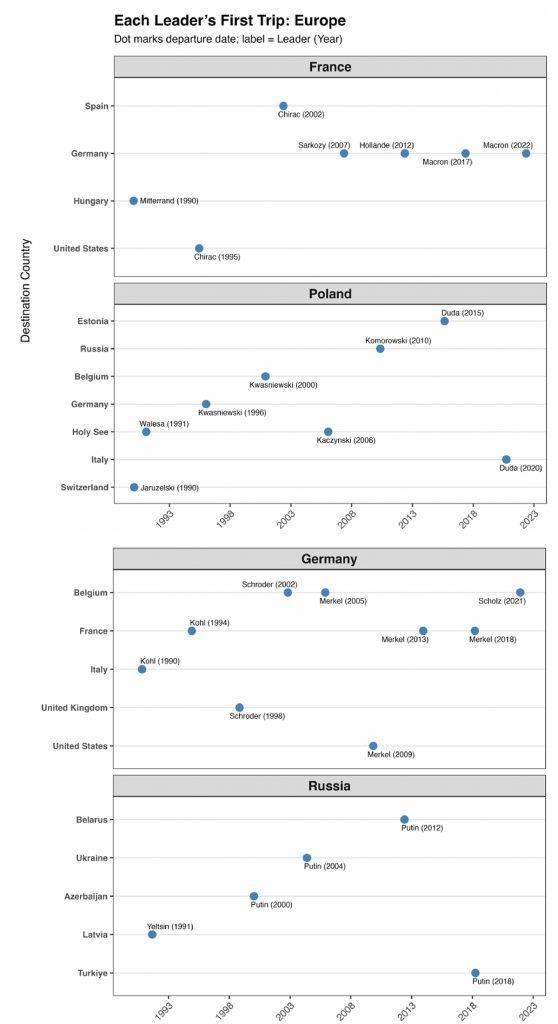
Merz’s second destination, Poland, is well integrated into Europe’s travel network. Interestingly, Polish Presidents’ inaugural trips reflect the country’s deep Catholicism. The first democratically elected President Lech Wałęsa in 1991, and Lech Kaczyński in 2005, both travelled first to the Vatican. In his second term, Andrzej Duda combined a visit to Italy and the Vatican. Russia remains a central diplomatic hub for former Eastern bloc countries. Vladimir Putin typically travels first to countries he still counts part of Russia's sphere of influence.
Beyond Europe, distinct regional patterns emerge. First trips in Asia balance neighbourhood ties and alignment with major powers. Indian prime ministers often start with smaller neighbours: Manmohan Singh, Atal Bihari Vajpayee and Inder Kumar Gujral visited Thailand, Sri Lanka and the Maldives respectively. Narendra Modi, too, began his second term with the latter, reaffirming India’s regional leadership. Meanwhile, Chinese Presidents Hu Jintao and Xi Jinping selected Russia, underscoring their strategic partnership. Israeli prime ministers Ariel Sharon, Ehud Olmert, and Naftali Bennett travelled first to the United States. Yet Benjamin Netanyahu’s re-return marked a departure. Netanyahu visited Jordan first, suggesting a recalibrated diplomatic message toward regional stability. In Africa, first trips also reflect regional priorities and historic ties. South African presidents consistently visit liberation-era allies like Mozambique and Angola; Nigerian leaders often start in neighbouring states like Cameroon or Kenya.
First trips in Asia balance neighbourhood ties and alignment with major powers; in Africa, first trips also reflect regional priorities and historic ties
In Australia, early post-Cold War leaders, such as Paul Keating, prioritised neighbours like Indonesia and New Zealand. Recent prime ministers focus on strategic and economic partnerships. Malcolm Turnbull’s back-to-back trips to New Zealand and China, Morrison’s visit to Singapore, and Anthony Albanese’s choice of Japan signal a recalibration toward the Indo-Pacific.
In Latin America, neighbourhood diplomacy dominates. Brazilian presidents begin with regional allies: Luiz Inácio Lula da Silva visited Ecuador at the start of both of his terms, Dilma Rousseff started her first term with a trip to Argentina and her second in Bolivia. Mexico presents a diverse pattern. Most presidents visit Central or South American neighbours: Rafael Ángel Calderón Fournier to Nicaragua and Enrique Peña Nieto to Chile. Others, however, made early trips to Switzerland, the US or the United Kingdom. This mix of regional engagement and extra-hemispheric diplomacy reflects Mexico’s dual positioning as a Latin American power and NAFTA / USMCA member.
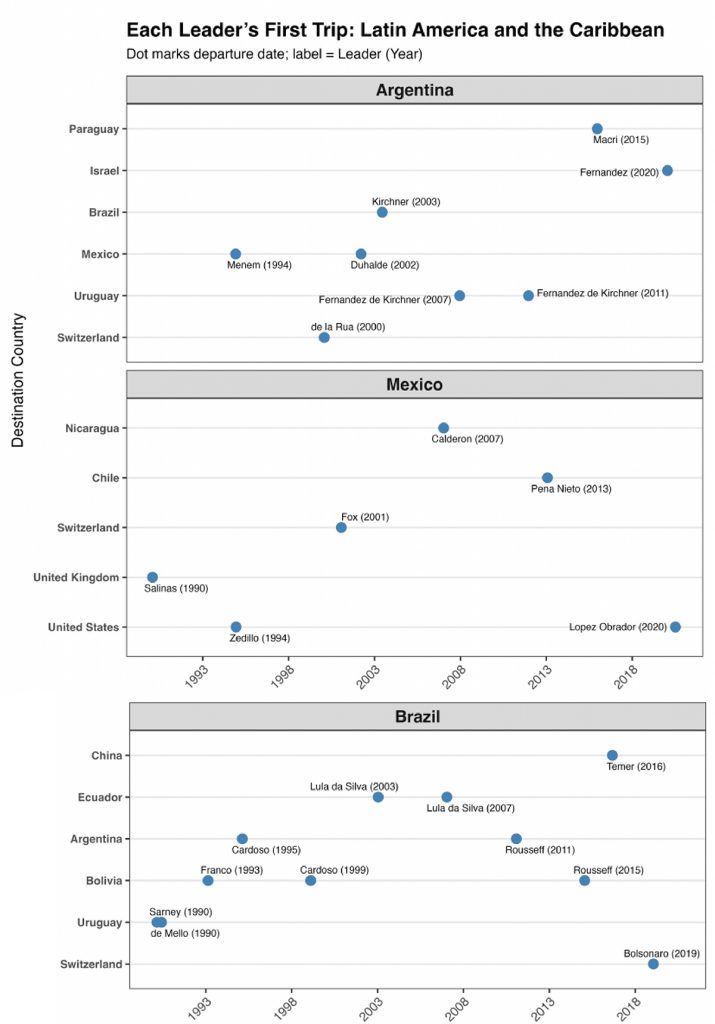
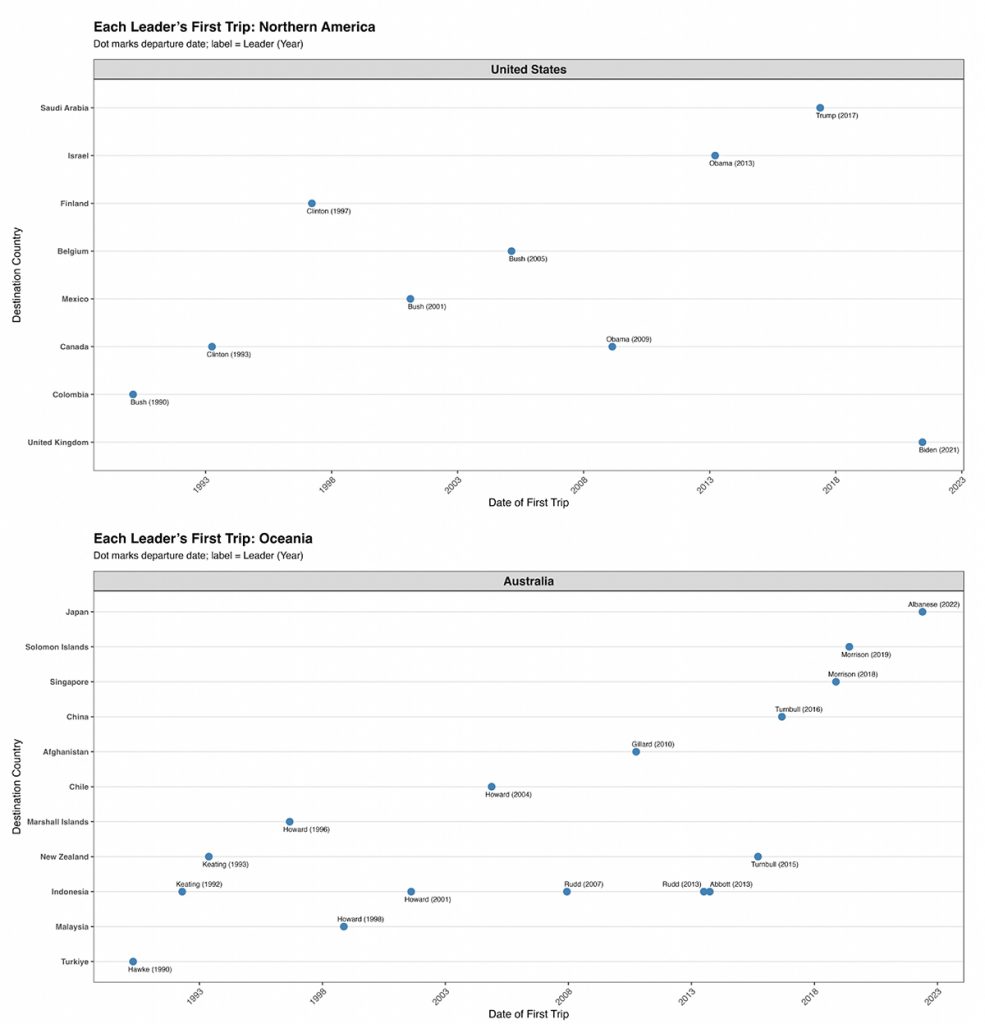
US Presidents also alternate between visiting neighbours and strategic global partners. Bill Clinton began his first term with Canada and his second with Finland, reflecting closeness and transatlantic priorities. George W. Bush went first to Mexico and later pivoted to Europe. Echoing this, Barack Obama started in Canada and turned to Israel in his second term. Breaking with tradition, Trump chose Saudi Arabia for his first trips in 2017 and 2025. Joe Biden first travelled to the UK for the G7 Summit, suggesting renewed emphasis on alliance repair and global coordination. While Canada, Mexico, and the UK are often early stops, the full pattern reveals how US leaders use their maiden trip to navigate not just proximity, but shifting global agendas.
US leaders use their maiden trip to navigate not just proximity, but shifting global agendas
First foreign visits are more than diplomatic routine – they are political storytelling. By narrowing our focus to inaugural trips only, we get a clearer picture of the symbolism. The patterns we see are not random: regional allies often take priority, and (contrary to conventional expectations) Global South leaders prioritise neighbouring states over former colonial powers.
Regional allies often take priority for leaders' first trips, and Global South leaders prioritise neighbouring states over former colonial powers
Our findings suggest that inaugural trips reflect emerging regional dynamics and leadership aspirations rather than simply reproducing historical hierarchies. But there is room for recalibration. Leaders may deviate from past precedent to signal new directions – whether that's Netanyahu prioritising Jordan or Trump launching his diplomacy in Riyadh. In a world of diplomatic overload, the first trip stands out as a rare moment of narrative control. It tells us where and how a leader wants to be seen.
Great read! I think the piece could be even more compelling with a deeper exploration of how leaders' trips differ depending on the type of regime they lead. Some nuanced insights into these variations, beyond simply looking at regions, would really enrich the discussion.